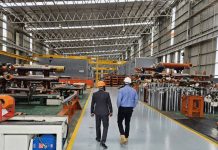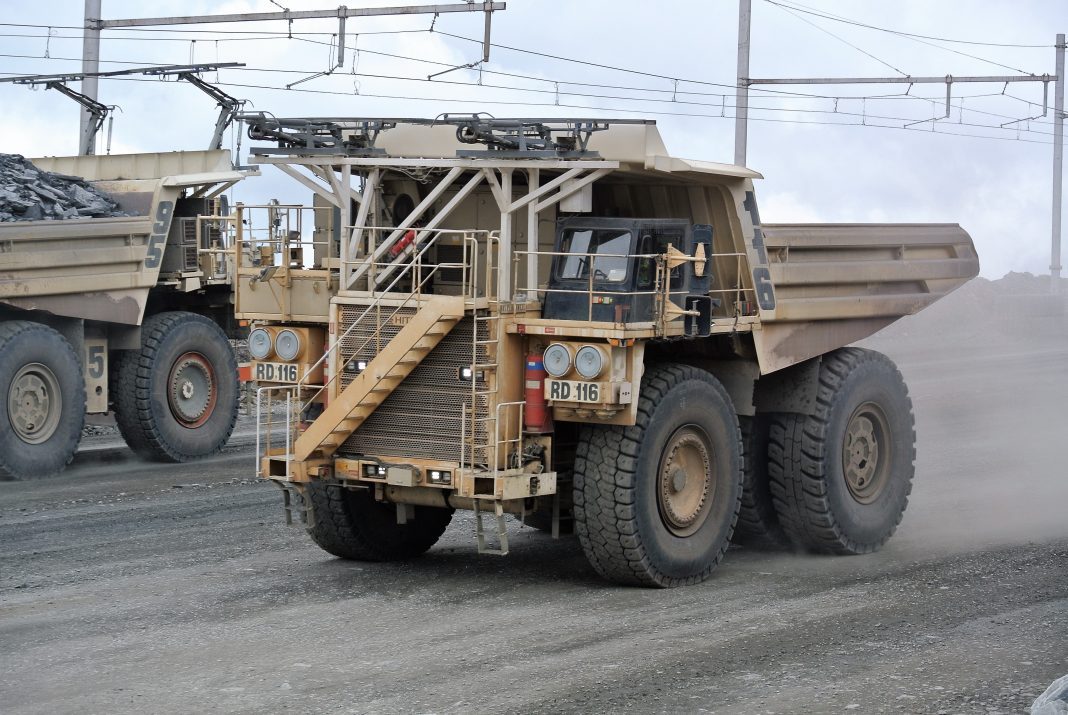Now with embedded video for more impact.
Mining once had a reputation for being a dirty business, but not any longer. With the steady advance of efficient, environmentally friendly technology, the industry has discovered that clean business can also be good business.
First Quantum Minerals’ Kansanshi Mine in Solwezi operates a system that provides its 180-tonne haul trucks with electrical power on the steep inclines leading out of the open pits where the ore is mined. It has cut both noise and pollution, and saved more than $6 million a year in net energy costs.
“Before we installed this system, our trucks were burning some 8 million litres of diesel fuel a year to get up the steep inclines leading out of the open pit, and generating a lot of noise and exhaust fumes in the process,” says Karl Ullrich, Kansanshi’s Technical Project Superintendent.
“Now, thanks to short bursts of electrical power to help the trucks climb out of the pit, they travel twice as fast, with none of the noise or diesel pollution – and with dramatically reduced wear-and-tear.”
These mine-haul trucks are powered by electric motors on each wheel, but the electricity for the motors is generated by an on-board diesel engine and alternator combination. The trucks can travel fairly fast on level ground, even when fully laden. However, they slow down considerably when faced with an incline, and the diesel engine has to work at maximum output to keep the truck moving.
The solution to this problem is an electric traction system colloquially known as “Trolley Assist” – so-called because it resembles the electrically driven trolley buses (or trams) that are a common site in many European towns and cities. The electricity comes from overhead catenary lines constructed on the roadside. The electricity is fed into the truck via a pantograph mounted on the roof – virtually identical to the kind found on electric trains. When the electricity is flowing, the truck’s diesel engine all but shuts down, as it is no longer needed.
The trucks travel twice as fast, with none of the noise or pollution
It’s a typical morning down in the open pit. A haul truck carrying nearly 180 tonnes of copper ore lumbers into view, its diesel engine making a deafening noise as it prepares to negotiate the incline.
“Listen closely, and you’ll hear how the engine noise drops,” says Ullrich. “Then watch how the truck picks up speed.“
The pantograph rises off the roof of the truck and touches the overhead electric cable. The effect is immediate – the noise level drops dramatically as the diesel engine shuts off. The truck seamlessly starts to pick up speed and appears to cruise effortlessly up the incline, emitting a quiet humming sound as it passes. Sophisticated on-board electronics keep the truck moving smoothly, at constant speed.
“It’s driving past us at 23 kilometres per hour, on a 10% slope,” says Ullrich. “Without Trolley Assist, it would be going at less than half of that – around 11 kilometres an hour.”
Trolley Assist basically doubles the speed at which fully laden haul trucks climb their way out of the pits, allowing massive productivity gains. Considerably more ore can be carried up into the plant on any given day, meaning that more copper can be produced. The environmental gains are equally impressive: more than 8 million litres of diesel fuel is saved every year, which translates into a stark reduction in both exhaust pollution and noise pollution. Finally, there is reduced wear-and-tear on the fleet – no small matter, given that a single truck costs $3.5-million and each tyre costs $60 000.
Kansanshi installed its first Trolley Assist line in 2011. Seeing the dramatic productivity and environmental gains it produced, the company installed three more over the following years. A fifth line is under construction and is expected to start operating within the next six months. Trolley Assist is also being introduced at FQM’s Sentinel Mine, in nearby Kalumbila, with equally dramatic results.
The upfront capital investment for a single Trolley Assist line is around $1.5 million. Most of that pays for the e-house (electronic house), which is effectively a mini-substation that converts high-voltage electricity (33 000 Volts AC) to a more manageable 2 600 volts DC, which is then fed into the overhead catenary lines.
“Trolley Assist is making a meaningful difference to Kansanshi’s production, profitability and sustainability,” says Ullrich. “That’s good for the company, good for production and good for the country.”
Developments like Trolley Assist are part of a growing global trend in mining machinery and equipment away from diesel power towards electricity, which is more efficient – and is also cleaner for the environment. The resulting productivity gains can give Zambian mines the economies of scale to remain internationally competitive. But, this is dependent on a plentiful, reliable and affordable supply of electricity, which is why reform of the power sector is so crucial to the future of mining in Zambia.
SEE ALSO: Something Shiny In The Copper
























